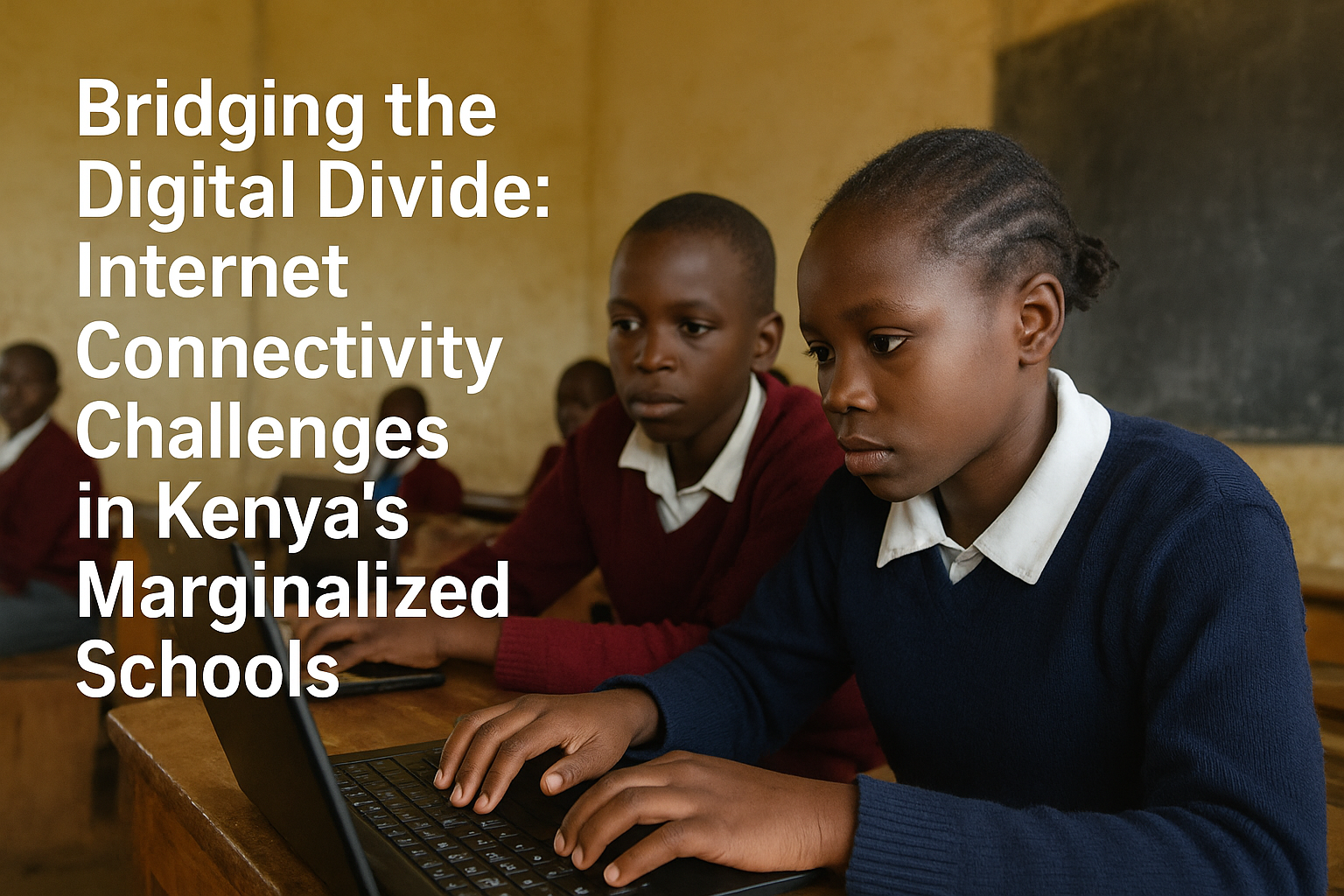


Access to the internet has become essential for modern learning, opening doors to information, collaboration, and skill-building. Yet for many schools in marginalized areas of Kenya, connectivity remains a significant challenge. Even where internet access exists, weak network signals, high costs, and limited devices make it difficult for students to benefit fully. This digital gap reinforces existing inequalities and limits opportunities for learners in already underserved communities.
Infrastructure and Signal Limitations
Many rural schools struggle with poor infrastructure. While some have internet connections, the network strength is often weak, unreliable, or intermittent. Teachers and students find it difficult to participate in online lessons, access educational resources, or submit assignments. In some cases, schools with satellite or mobile data connections experience frequent outages, leaving students without consistent access for weeks at a time.
Even in schools that have internet-enabled classrooms, signal strength varies drastically across campuses. One teacher in a coastal county explained, “We have a router, but in some classrooms, the network barely works. Students end up crowding near one corner just to get a signal.”
Economic and Resource Barriers
The cost of internet access remains another major hurdle. Many marginalized families cannot afford devices or data plans for online learning, meaning students rely on schools or community centers for access. When network signals are weak, even the limited resources available become ineffective. This inequality limits not only academic learning but also exposure to digital literacy, coding, and global knowledge networks.
Impact on Learning and Motivation
Weak connectivity affects both engagement and performance. Students unable to reliably access online resources fall behind in digital skills and curriculum content. Teachers also face frustration trying to integrate technology into lessons when connections drop or platforms fail to load. Over time, this discourages innovation in teaching and learning, reinforcing the perception that digital tools are out of reach for marginalized schools.
Community and Teacher Adaptations
Despite these challenges, communities and educators are finding creative solutions. Some schools schedule learning around peak signal hours, while others rely on offline digital resources such as preloaded tablets or USB drives. Local mentorship and peer-led technology clubs help students make the most of limited access. These approaches, while effective to some extent, cannot fully substitute for reliable connectivity and structured support.
A Path Forward
Addressing the internet gap requires coordinated efforts. Strengthening network infrastructure, lowering costs for schools, providing devices, and training teachers in digital integration are all critical steps. Partnerships with telecommunication providers, government initiatives, and NGOs can help bring sustainable solutions to marginalized regions.
For Kenya to fully embrace digital learning and prepare students for the 21st century, internet access cannot be sporadic or weak—it must be reliable, equitable, and inclusive. Closing this gap will ensure that learners in every part of the country have the opportunity to connect, learn, and grow in an increasingly digital world.
